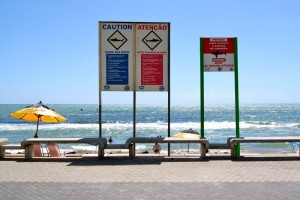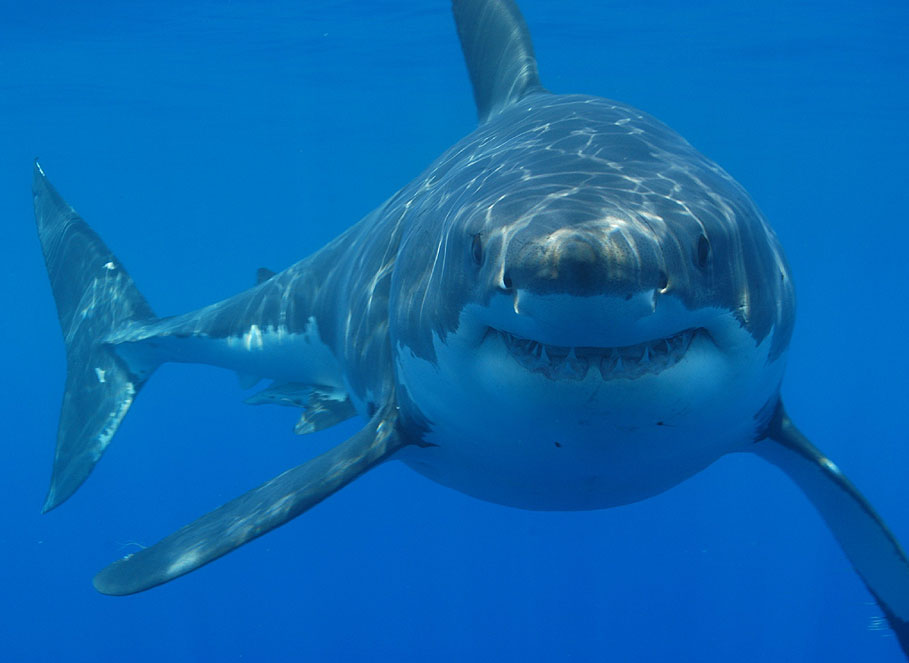Surfers are generally quite a fearless bunch of thrill-seekers, paddling out into thumping waves and conditions that often see the red flag raised by lifeguards, if there are even any lifeguards on the shore. When it comes to surfing with sharks however, a sighting can put the fear into even the toughest surfer and rightly so. Just last month a shark sighting at Jeffery’s Bay sent around 50 surfers scrambling for the beach just as the waves were really beginning to pump. With the WCT returning to J-Bay this month the world’s best will have to keep their eyes peeled for that sinister shadow lurking beneath. In 2003 Taj Burrow spotted a big shark that gave him enough of a fright to cut his heat short and head straight back to land. Check out this video of a guy on his SUP board spotting a shark swim under his board.
http://www.youtube.com/watch?v=hLFbNN1vjOQ
The Statistics of Surfing with Sharks
Bearing in mind there was a shark attack on a swimmer at Manhattan Beach just last week, Californain surfers might be more worried than usual about going out in the water, but actually California is not so much of a shark hotspot compared to another US State. According to the International Shark Attack File, Florida is the most likely place you’ll encounter a shark and have the scars to prove it. More shark attacks happen here than anywhere in the world, 23 recorded in 2013, but these are rarely fatal. With so many people in the waters around Florida compared to other spots in the world there is naturally more chance of someone being attacked. Australia had almost half the total number of shark attacks over the last ten years compared to Florida, but 15 were fatal, compared to 2 in Florida. South Africa could be considered the most lethal in regard to shark attacks, with just 52 attacks over the last 10 years, but 13 of them being deadly. In other words, 1 in 4 shark attacks in South Africa result in death.
Sharky Surf Spots
 Some of the best surf spots across the globe have the added risk of being prowled by dangerous sharks. Jeffrey’s Bay in South Africa is one, so is Mavericks in California, and the breaks around Margaret River in Western Australia have gained notoriety for lethal shark attacks. Over in Brazil, the coastline bordering the city of Recife has been a bull shark hotspot since the beginning of the 90’s thanks to coastal development, over-fishing, river waste and other contributing factors.
Some of the best surf spots across the globe have the added risk of being prowled by dangerous sharks. Jeffrey’s Bay in South Africa is one, so is Mavericks in California, and the breaks around Margaret River in Western Australia have gained notoriety for lethal shark attacks. Over in Brazil, the coastline bordering the city of Recife has been a bull shark hotspot since the beginning of the 90’s thanks to coastal development, over-fishing, river waste and other contributing factors.
Last year the government in Reunion Island actually banned surfing outside of the island’s lagoons because of a spate of lethal shark attacks, with the ability to impose a $50 fine to those caught surfing. Some surfers here actually protested in front of government buildings in favour of culling sharks around the island. Australia is another one of the few places in the world to carry out shark culls to try and protect people from being attacked in the ocean, and the scheme has been met with some controversy and opposition.
Is it Worth the Risk?
One reason why surfers continue to ride waves in sharky waters is that they really are a hidden threat. Sharks are rarely seen, and when they are no-one hangs around. If we could easily see all the dangerous sea creatures surrounding the waves we love to surf, like sharks, jelly fish, sea snakes and sting rays, we might think twice. You wouldn’t play football in a field with lions and tigers prowling around would you? Also, statistically you are very unlikely to be attacked by a shark while surfing, with more chance of you dying in a traffic accident on route to the surf spot or being struck by lightning while getting into your wetsuit. Simply put, if you are worried about the risk of being attacked by a shark, try to surf somewhere they don’t hang out. For every sharky surf spot, there are tons more that sharks pass on by.
